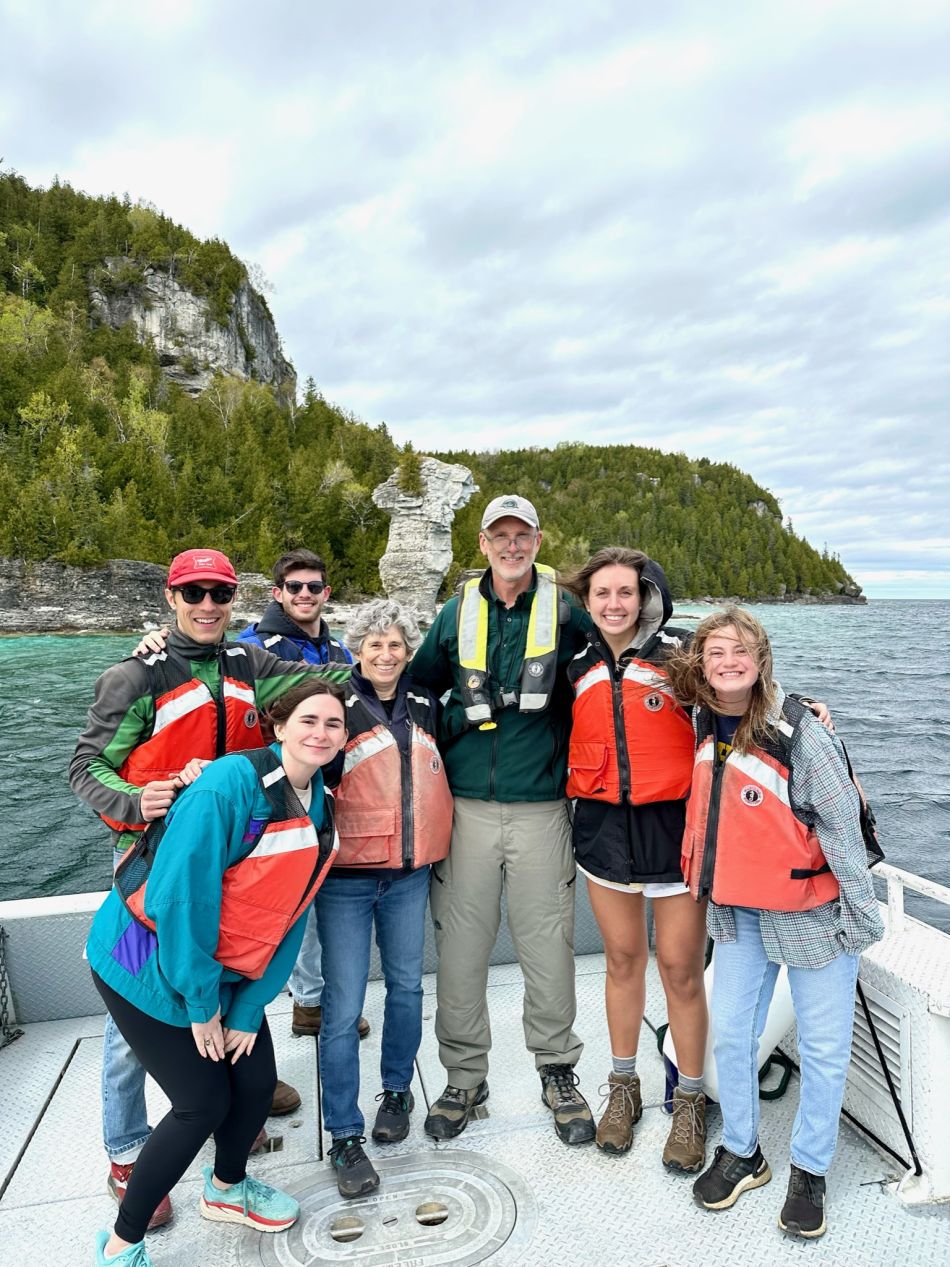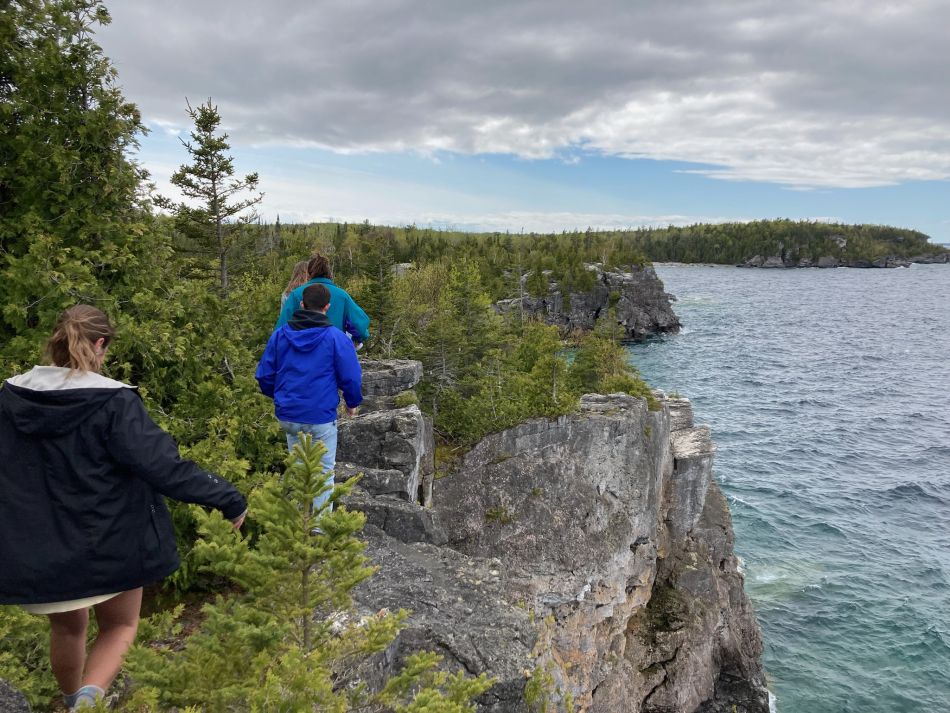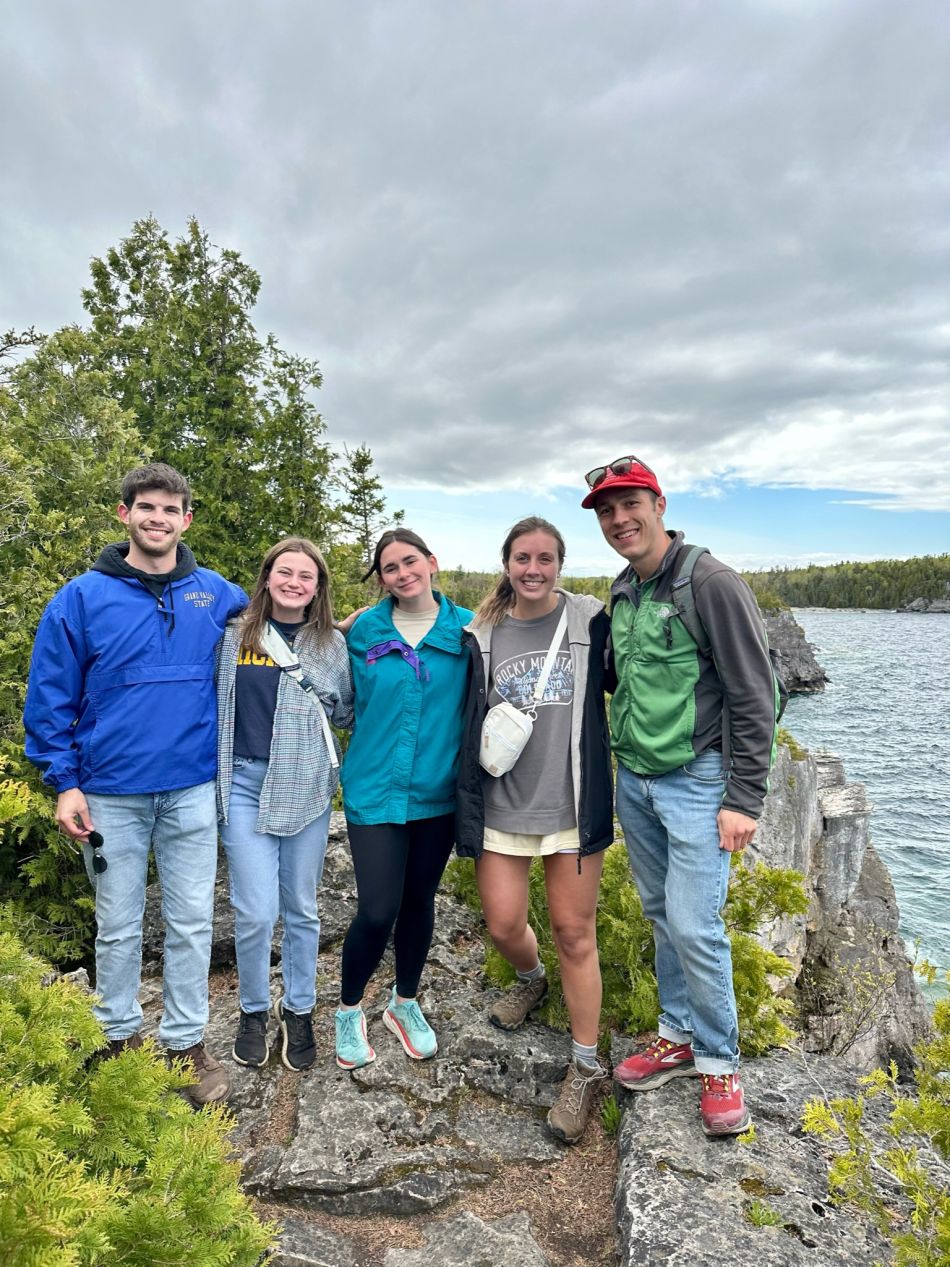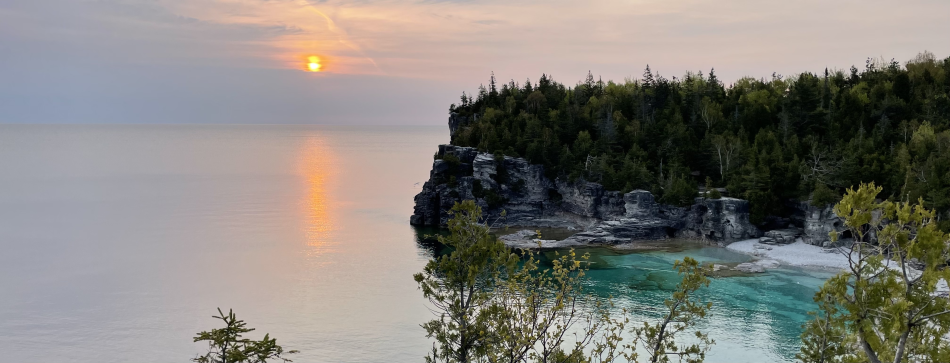




As the world’s largest surface freshwater system, the Laurentian Great Lakes provide essential habitats to thousands of species, drinking water for over 40 million people, and significant economic and cultural value to the residents of Canada, the US, and Indigenous Nations. To address biodiversity loss, Canada and the US have each committed to protecting 30% of lands, marine waters, and freshwater by 2030 (i.e., 30x30) through the Global Biodiversity Framework and America the Beautiful initiative, respectively. US and Canadian progress towards achieving 30x30 targets in freshwater systems lags behind progress in oceans. Marine protected areas (MPAs) are one of many strategies both the US and Canada have deployed to protect aquatic ecosystems and cultural resources and could be a significant tool for achieving 30x30 targets in the Great Lakes.
We worked with the National Oceanic and Atmospheric Administration (NOAA) and Parks Canada to evaluate how their Great Lakes MPA programs are positioned to achieve 30x30 targets. Our primary goals were to (1) assess the values federal MPAs currently provide for the Great Lakes and (2) evaluate ways for NOAA and Parks Canada to achieve a more cohesive, collaborative, and effective Great Lakes MPA network. As part of an integrated evaluation, we reviewed agency, academic, and gray literature; conducted 33 semi-structured interviews with agency staff, researchers, environmental advocacy leaders, citizens of Indigenous Nations, and local stakeholders; and developed supporting maps. To create evaluation criteria, we reviewed and synthesized nine existing protected area evaluation frameworks. Our analysis focused on NOAA’s National Marine Sanctuaries (NMSs) and Parks Canada’s National Marine Conservation Areas (NMCAs).
Reviewing NOAA’s and Parks Canada’s MPA program goals, we found that while each agency’s national goals generally align with 30x30 goals, the agencies have opportunities to develop a set of binational outcomes specific to the Great Lakes. We observed consistent support for the agencies’ bottom-up approaches to siting and designation. However, the agencies have an opportunity to advance connectivity by developing a regional strategy concerning other effective area-based conservation measures (OECMs), which achieve conservation outcomes without having express conservation goals. Additionally, while NOAA’s and Parks Canada’s informal and formal partnerships with other organizations are important for governance, the agencies can strategically build on existing partnerships (e.g., with fishery managers) to expand the conservation impact of MPAs. Monitoring and evaluation of MPAs is critical for adaptive management and demonstrating conservation outcomes, but existing monitoring programs are resource-limited. NOAA and Parks Canada can supplement monitoring programs through strategic qualitative evaluations, academic partnerships, and emerging technologies. Finally, although Great Lakes MPAs provide significant educational and research benefits, opportunities exist to expand educational outreach to urban communities and promote research that advances climate change mitigation, fisheries management, and demonstrating conservation performance.
While MPAs benefit Great Lakes ecosystems and communities, the full potential of MPAs remains largely untapped. We hope our report will help NOAA and Parks Canada bolster their strategies to reach conservation goals and demonstrate the value of MPAs in the Great Lakes.
Alexis Rolling ([email protected]), Cassie McHugh ([email protected]), Ian Stone ([email protected]), Sophie Bryden ([email protected]), Willy Pevec ([email protected])

M.S. in Sustainable Systems and Sustainability and Development from the School for Environment and Sustainability

M.S. in Ecosystem Science and Management and Geospatial Data Science from the School for Environment and Sustainability

M.S. in Environmental Policy and Planning at the School for Environment and Sustainability

M.S. in Environmental Policy and Planning at the School for Environment and Sustainability

M.S. in Environmental Policy and Planning at the School for Environment and Sustainability

Professor of Practice & Engagement at the University of Michigan, School for Environment and Sustainability; Director of Engagement, Cooperative Institute for Great Lakes Research (CIGLR) and Michigan Sea Grant (MISG)

The University of Michigan SEAS team would like to acknowledge that this project would not have been possible without all the support from our family and friends.
We also would like to thank our faculty advisor Mike Shriberg for his constant support and guidance throughout the entirety of this project. His expertise has played a crucial role in both the project's development and the team's growth over the last 18 months. We value and appreciate his dedication to creating an enriching environment and for his unwavering belief in us throughout the entire process.
We also would like to specifically thank our clients, Ellen Brody with NOAA and Scott Parker with Parks Canada, for entrusting us with this meaningful project. Their vision and collaboration has allowed this project to be successful and we appreciate their trust in our team and for being so welcoming. With this, we would also like to thank their respective organizations and the National Marine Sanctuaries Foundation for its funding and opportunities for the team.
We also would like to extend our gratitude to everyone that we spoke to throughout this process, including our interviewees. Their participation and contributions of time, knowledge, and thoughtfulness were invaluable and this project would not have been possible without their support. With this, we respect and value their enthusiasm for this subject and region and hope to perpetuate that kind of passion in our future endeavors.
Finally, as graduate students at the University of Michigan School for Environment and Sustainability, we would like to thank the school for its funding and masters project program.




